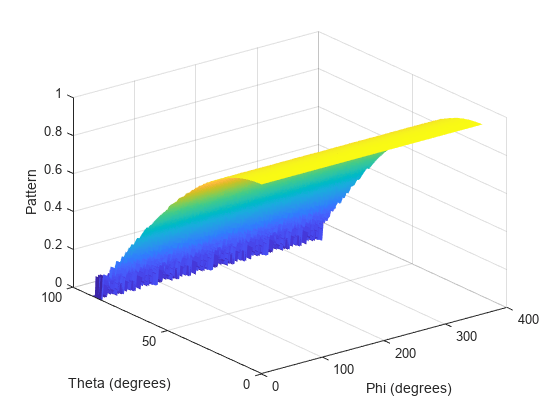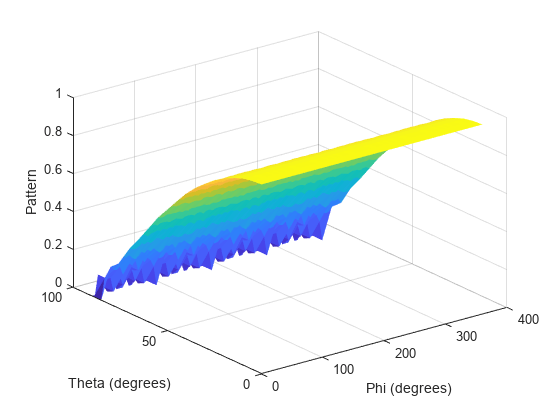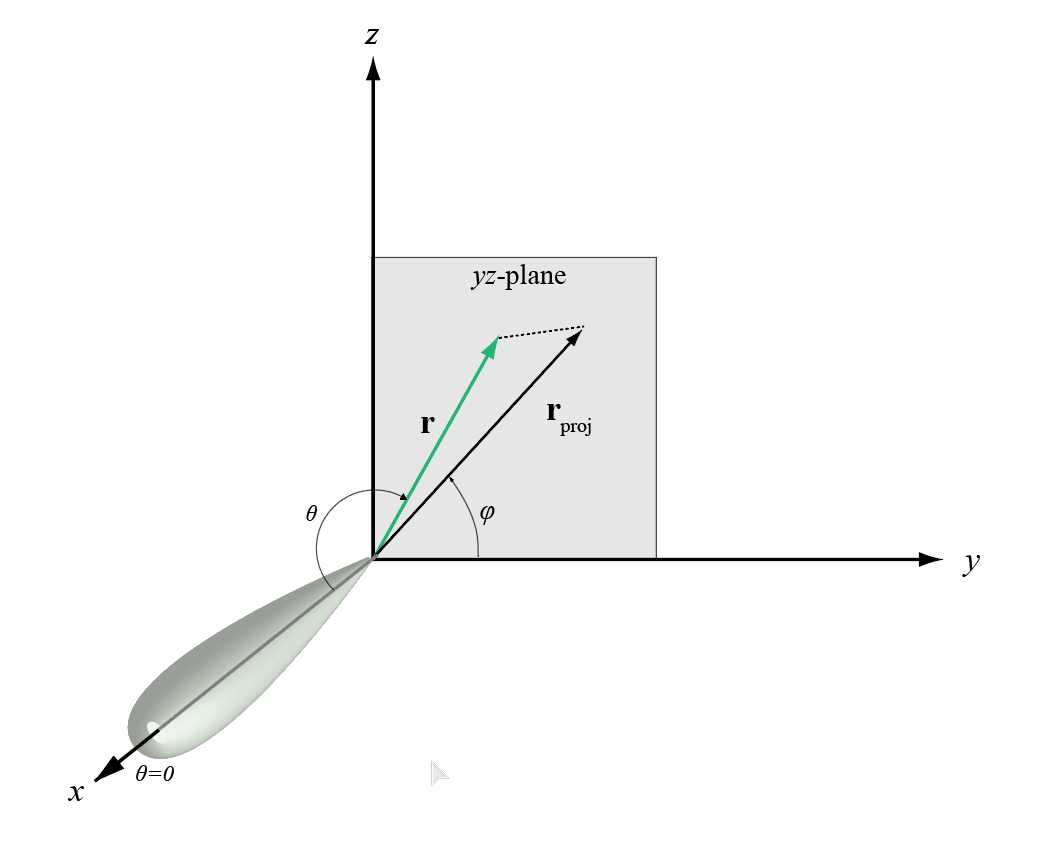uv2phithetapat
Convert radiation pattern from u/v form to phi/theta form
Syntax
Description
pat_phitheta = uv2phithetapat(pat_uv,u,v)pat_phitheta in φ/θ
angle coordinates instead of u/v space coordinates. pat_uv samples
the pattern at u angles in u and v angles
in v. The pat_phitheta matrix
uses a default grid that covers φ values from 0 to 360 degrees
and θ values from 0 to 90 degrees. In this grid, pat_phitheta is
uniformly sampled with a step size of 1 for φ and θ. The
function interpolates to estimate the response of the antenna at a
given direction.
[
returns vectors containing the φ and θ angles at which
pat_phitheta,phi_pat,theta_pat]
= uv2phithetapat(___)pat_phitheta samples the pattern, using any of the input
arguments in the previous syntaxes.
Examples
Input Arguments
Output Arguments
More About
Extended Capabilities
Version History
Introduced in R2012a


